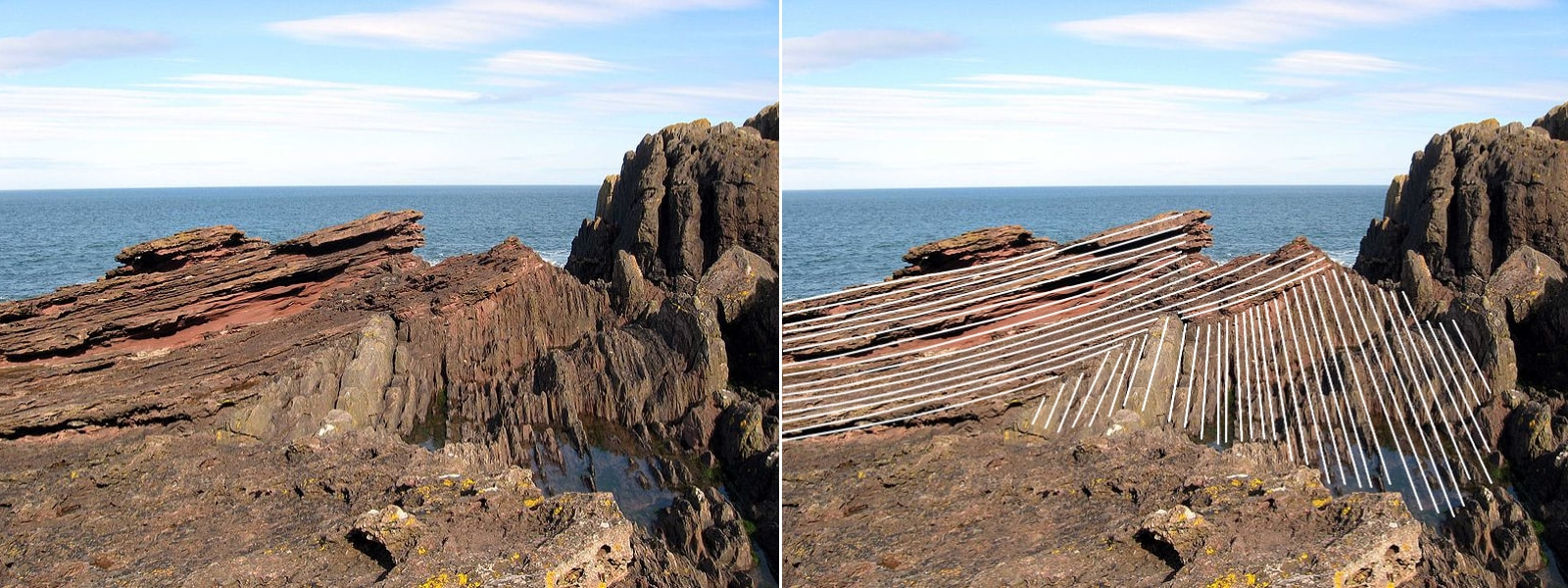|
One of the greatest discoveries of mankind is the discovery of deep time. This is the realization that our planet is billions of years old. This discovery is remarkable because the geological forces that shape our world act on timescales much longer than a hundred human lifespans. Thus understanding geologic time lies outside the regular experience of individuals and beyond the cultural memory of societies. Back in the 18th century, following the analysis of the creation accounts in the Bible, it was believed that the world was a few thousand years old, but the practitioners of the incipient science of geology were finding evidence in the rocks that pointed to much longer time periods. Chief among these practitioners was the Scottish naturalist James Hutton who is considered the father of modern geology. Among the evidence Hutton put forward to argue for an Old Earth is the amazing rock formation found in a rocky outcrop called Siccar Point in the county of Berwickshire off the east coast of Scotland (see figure below). This rock formation is called an “unconformity” (today known as Hutton’s Unconformity: left) because it is made up of layers of rock adjacent to each other that are discontinuous and were formed in different time periods. If you look closely you will see that there are layers of red sandstone on top that are oriented at close to right angles to the underlying layers of grey sandstone which are nearly vertical (see the image at right where I drew white lines to highlight the layers). Hutton understood that the underlying vertical bands of grey sandstone at Siccar Point had once been deposited as horizontal layers of sediments in the bottom of body of water. These layers of sediments were then turned into rock, uplifted, and tilted to acquire their present vertical orientation. The top of these layers then underwent erosion and became shallow enough to be overlaid by new layers of sediments. After this, the new layers of sediments were turned into rock and the land was uplifted and eroded again to attain its present shape. Hutton didn’t have a way to figure out the age of rocks, but he realized that there was no way all this could have happened in just a few thousand years. Such huge changes in the landscape could have only happened over vast intervals. He had discovered deep time! Nowadays, using radiometric dating, scientists have determined that the Earth is billions of years old. The vertical layers of grey sandstone at Siccar Point were deposited 435 million years ago, while the overlying horizontal layers of red sandstone were deposited around 370 million years ago. There is a gap of 65 million years between these two events which represents the time during which the older rocks were formed, forced to the surface, buckled, and eroded. The photograph of Hutton’s Unconformity by dave souza was duplicated and modified by drawing lines to highlight the layers and is used here under Attribution-Share Alike 4.0 International, 3.0 Unported, 2.5 Generic, 2.0 Generic and 1.0 Generic licenses.
0 Comments
I took the photos below during my visit to Theodore Roosevelt National Park (The Badlands) in North Dakota. The spherical boulders featured in the photos are a type geological formation called “cannonball concretions”. Concretions can range from fractions of an inch to more than 9 feet wide. They are formed when minerals are deposited around a core. Many concretions found in sedimentary rocks like sandstone or mudstone have a fossil at its center. These concretions form when carbon salts such as carbonate or bicarbonate leach out from decaying organic matter and react with calcium in the surrounding environment to produce calcium carbonate (calcite) which precipitates around the dead organism also acting like glue that traps in grains of sediment. Eventually, the layers of sediment around the concretion are compacted and cemented into rocks. The material of the concretion is harder and therefore more resistant to erosion than the surrounding rock. You can see some of the concretions in the photos below are still surrounded by the softer sedimentary rock that is slowly being eroded away. |
Details
Categories
All
Archives
June 2024
|

 RSS Feed
RSS Feed